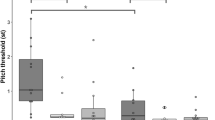Abstract
The classic picture of an autistic individual includes an impoverished ability to interpret or express emotion. The prosody of spoken language in autistic children is thought to lack emotional content. In this study, the verbal intonation of children with autism was examined and compared to that of children with Asperger Syndrome (AS) and normal controls (ctrl). Utterances elicited by repetition and by spontaneous story completion were analyzed by quantifying phonetic features (pitch, amplitude, and length) and comparing them to subjective ratings of produced emotion (happy, sad or angry). Since the most consistent phonetic correlate of these emotional targets has been demonstrated to be pitch range, speakers with autistic spectrum disorders were expected to have decreased pitch range; however in the repetition task, autistic subjects actually had a larger pitch range than the other groups. Other measures of intonation including amplitude, duration, and location of pitch peak revealed defects that are more complex than predicted. In spontaneous speech, autistic subjects performed more poorly on both phonetic targets and subjective ratings than ctrls, and AS subjects fell between autistics and normals.
Similar content being viewed by others
References
Bachorowski J., Owren M.J. (1995). Vocal expression of emotion: Acoustic properties of speech are associated with emotional intensity and context. Psychological Science, 6, 219–224
Banse R., Scherer K. (1996). Acoustic profiles in vocal emotion expression. Journal of Personality and Society of Psychology, 70, 614–636
Bolinger D.L. (1955). Intersections of stress and intonation. Word, 11, 195–203
Diagnostic and Statistical Manual of Mental Disorders—Text Revision (DSM-IV—TR) (2000). Arlington, VA: American Psychiatric Association.
Frick R.W. (1985). Testing visual short-term memory: Simultaneous versus sequential presentations. Memory & Cognition, 13(4):346–356
Ladd D.R. (1996). Intonational phonology. Cambridge, Cambridge University Press
Lieberman P., Michaels S.B. (1962). Some aspects of fundamental frequency and envelope amplitude as related to the emotional content of speech. Journal of the Acoustical of Society of America, 34, 922–927
McRoberts G.W., Studdert-Kennedy M., Shankweiler D.P. (1995). The role of fundamental frequency in signaling linguistic stress and affect: Evidence for a dissociation. Perception and Psychophysics, 57, 159–174
Murray I.R., Arnott J.L. (1993). Toward the simulation of emotion in synthetic speech: A review of the literature on human vocal emotion. Journal of Acoustical Society of America, 93(2):1097–1108
Pell M.D. (2001). Influence of emotion and focus location on prosody in matched statements and questions. Journal fo Acoustical Society of America, 109(4):1668–1680
Shriberg L.D. (2001). Speech and prosody characteristics of adolescents and adults with high-functioning autism and Asperger syndrome. Journal of Speech Language and Hearing Research, 44(5):1097–1115
Sobin C., Alpert M. (1999). Emotion in speech: The acoustic attributes of fear, anger, sadness, and joy. Journal of Psycholinguistic Research, 28(4):347–365
Streeter L., MacDonald N., Apple W., Krause R., Galotti K. (1983). Acoustic and emotional indicators of emotional stress. Journal of the Acoustical Society America, 73:1354–1360
Tanguay P.E. (2000). Pervasive developmental disorders: A 10-year review. Journal of the American Academy of Child and Adolescent Psychiatry, 39(9):1079–1095
Willemsen-Swinkels S.H. (2002). The autistic spectrum: subgroups, boundaries, and treatment. Psychiatric Clinics of North America, 25(4):811–836
Williams C.E., Stevens K.N. (1972). Emotions and speech: Some acoustical correlates. Journal of Acoustical Society America, 52(4):1238–1250
Author information
Authors and Affiliations
Corresponding author
Rights and permissions
About this article
Cite this article
Hubbard, K., Trauner, D.A. Intonation and Emotion in Autistic Spectrum Disorders. J Psycholinguist Res 36, 159–173 (2007). https://doi.org/10.1007/s10936-006-9037-4
Published:
Issue Date:
DOI: https://doi.org/10.1007/s10936-006-9037-4




